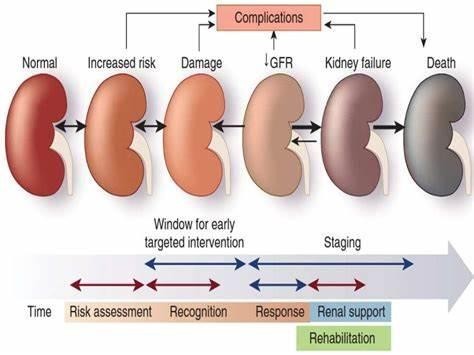In evaluating a staff nurse who demonstrates inconsistent performance, which intervention should the nurse- manager employ?
Evaluate the nurse's performance using standards of practice, citing both strengths and weaknesses with emphasis on ways to improve practice.
Focus on the strengths of the staff nurse; discuss any weaknesses verbally but avoid documenting the nurse's negative behaviors.
Emphasize the nurse's areas of weakness in light of the inconsistent performance observed and discuss how to improve in each of these areas.
Focus on a discussion of how the inconsistency in the staff nurse's performance disrupts the routine of all of the staff members on the unit.
The Correct Answer is A
Choice A Reason: This intervention is the most appropriate and effective for the nurse-manager to employ, as it provides clear and objective feedback to the staff nurse based on professional criteria, and encourages a positive and constructive approach to enhance the nurse's performance and development.
Choice B Reason: This intervention is not advisable, as it may create a false impression of the staff nurse's performance and fail to address the underlying issues or problems. Documenting the nurse's negative behaviors is important for accountability and improvement purposes, and avoiding it may expose the nurse manager to legal or ethical risks.
Choice C Reason: This intervention is not optimal, as it may demoralize or discourage the staff nurse and create a negative or hostile work environment. Focusing only on the areas of weakness may overlook the strengths and potential of the staff nurse, and may not foster a supportive and collaborative relationship between the nurse- manager and the staff nurse.
Choice D Reason: This intervention is not relevant, as it may divert the attention from the staff nurse's performance and shift the blame to external factors. Discussing how the inconsistency in the staff nurse's performance disrupts the routine of all of the staff members on the unit may not help the staff nurse identify and address their own areas of improvement, and may cause resentment or conflict among the team.
Nursing Test Bank
Naxlex Comprehensive Predictor Exams
Related Questions
Correct Answer is A
Explanation
Choice A Reason: This role is responsible for coordinating the continuum of care for clients with complex health needs, such as head injury. The nurse case manager collaborates with the interdisciplinary team, the client, and the family to plan, implement, and evaluate the client's care from admission to discharge.
Choice B Reason: This role is responsible for providing primary and specialty care to adults, such as diagnosing and treating acute and chronic conditions, prescribing medications, and ordering tests. The adult nurse practitioner may be involved in the client's care, but not in coordinating it.
Choice C Reason: This role is responsible for managing the daily operations of the neurology unit, such as staffing, budgeting, quality improvement, and staff development. The neurology unit supervisor may oversee the client's care while on the unit, but not throughout the continuum of care.
Choice D Reason: This role is responsible for identifying and preventing potential risks and liabilities in the healthcare setting, such as errors, injuries, infections, or lawsuits. The risk management nurse may monitor the client's care for quality and safety issues, but not for coordination.
Correct Answer is B
Explanation
A) This client has a mild fever, which may indicate an infection or inflammation. This is a potential complication of enteral feedings, but it is not the most urgent situation. The nurse should monitor the client's vital signs, assess the feeding tube site, and notify the provider if the fever persists or worsens.
B) This client has signs of uremic encephalopathy, which is a life-threatening condition caused by the accumulation of toxins in the brain due to impaired renal function. The nurse should intervene immediately to prevent further
neurological damage and possible coma or death. The nurse should assess the client's level of consciousness, check the blood pressure and urine output, and prepare to administer dialysis or other treatments as ordered by the provider.
C) This client has heat stroke, which is a serious condition that can lead to dehydration, electrolyte imbalance, and organ damage. However, the client is receiving a normal saline IV fluid bolus, which is an appropriate intervention to restore fluid volume and correct sodium levels. The nurse should continue to monitor the client's vital signs, skin
temperature, and urine output, and watch for signs of fluid overload or cerebral edema.
D) This client has hyperemesis gravidarum, which is a severe form of nausea and vomiting during pregnancy that can lead to dehydration, malnutrition, and electrolyte imbalance. However, the client is receiving an infusion of Ringer's Lactate, which is an isotonic solution that can replenish fluid and electrolyte losses. The nurse should continue to monitor the client's vital signs, weight, and intake and output, and administer antiemetics or other medications as ordered by the provider.

Whether you are a student looking to ace your exams or a practicing nurse seeking to enhance your expertise , our nursing education contents will empower you with the confidence and competence to make a difference in the lives of patients and become a respected leader in the healthcare field.
Visit Naxlex, invest in your future and unlock endless possibilities with our unparalleled nursing education contents today
Report Wrong Answer on the Current Question
Do you disagree with the answer? If yes, what is your expected answer? Explain.
Kindly be descriptive with the issue you are facing.
